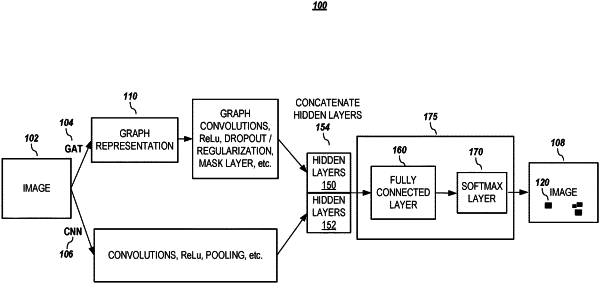| CPC G06T 7/0008 (2013.01) [G06F 16/9024 (2019.01); G06T 2207/10081 (2013.01); G06T 2207/10116 (2013.01); G06T 2207/20081 (2013.01); G06T 2207/20084 (2013.01)] | 20 Claims |

|
1. A method for detecting an anomaly, the method comprising:
receiving, at a Graph Attention Network (GAT), data associated with objects, the GAT
threating each of the objects as a node, treating connections between objects as edges in a graph, and performing a graph-based convolution using multi-head attention;
obtaining from the GAT a first output set of hidden representations;
receiving, at a Convolutional Neural Network (CNN), at least some of the data;
obtaining from the CNN a second output set of hidden representations;
concatenating the first and second output sets of hidden representations to obtain a concatenated set of representations; and
detecting whether an anomaly exists using the concatenated set of representations and a third neural network, which receives the concatenated set of representations as an input.
|